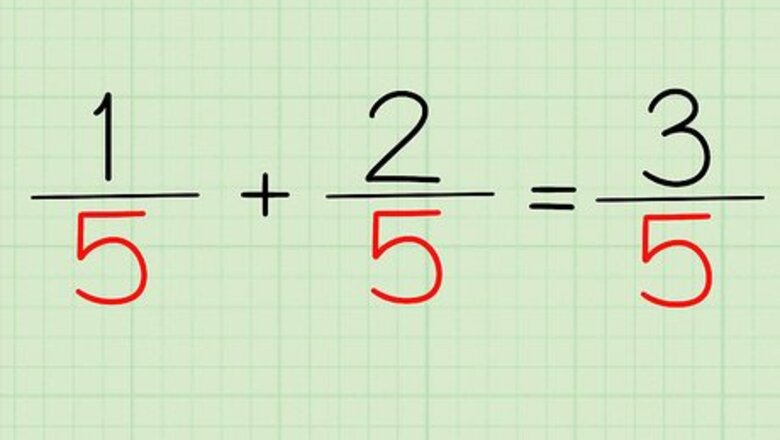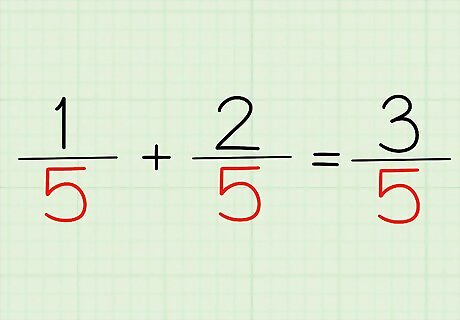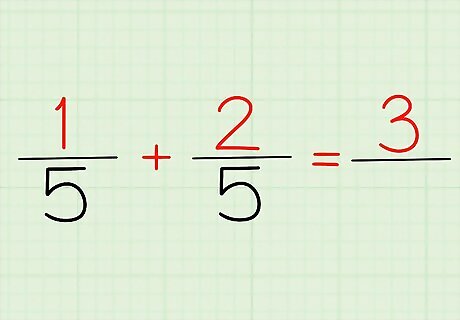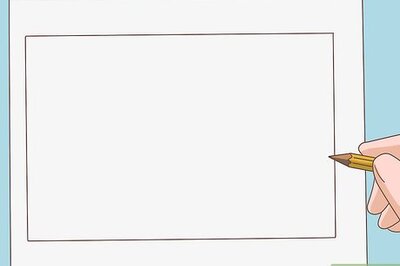
views

Start with two similar fractions. If two mixed numbers have "like fractions," it means that they both have a common denominator. This is very important; to add or subtract, the values must have a common denominator. (The denominator is the bottom number of the fraction.) If the fractions do NOT have a common denominator, you will have to make them the same by finding a common number that the two current denominators have in common (A good place to start is to multiply the denominators together to get a number that they both can relate to, or by the other numbers denominator. Remember to multiply the numerator by whatever number the denominator needs to be multiplied by to get the new common denominator!). 4/3 + 5/3, both fractions have a denominator of 3.
Add the whole numbers together. Ignore the fractions for now. Add the whole numbers together just as you would normally. In our example problem, 4/3 + 5/3, the whole numbers are 4 and 5. Add 4 + 5 = 9.

Add the numerators (the top numbers) of the fractions. When adding fractions with like denominators, the answer will have the same denominator. Just add the numerators together to get the new numerator. In our example, the fractions are /3 and /3. To add them together, add + = , and keep the same denominator to get /3. It might help to think of real objects. Let's say you cut two pizzas into thirds and start counting how many you have. If you have three pizza thirds in one box and three pizza thirds in another box, you have six pizza thirds altogether.
Simplify the fraction (if needed). If your fraction has a top number larger than or equal to the bottom number, it is an improper fraction. You can turn it into a mixed number using one of these two methods: Turn part of the fraction into 1, then repeat until the fraction is proper. For example, for the fraction /3, you can turn /3 into 1. To see how much of the fraction is left over, calculate /3 - /3 = /3. The simplified form is 1/3. For large fractions, it's faster to divide the top number by the bottom number to find the whole number, then use the remainder as the numerator of the new fraction. For instance, if we had a fraction like /4, you could divide: 25 ÷ 4 = 6 with a remainder of 1, so the simplified form is 6/4.
Add together the two parts of your answer. Now you've added the whole numbers, and you've added the fractions. Add your two answers together to get your final answer. In our main example, we added 4 + 5 = 9 and /3 + /3 = 1/3. The final answer is 9 + 1/3 = 10/3


















Comments
0 comment